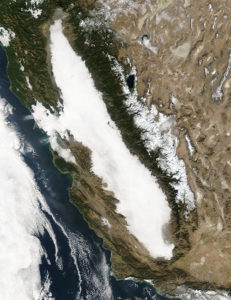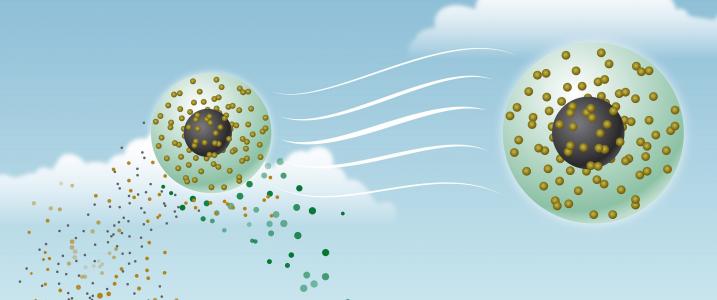These days, weather is but one of a group of issues foremost on people’s minds. On the other hand, air quality, as another issue, well, not so much.
Even so, this is no reason the quality or condition of air around the globe should be downplayed in terms of its importance. Air and weather are both important parts of the earth’s makeup. And, both are critical factors in humanity’s survival, its perpetuation.
So, in that sense (where life is concerned), it is difficult to talk about one and not talk about the other when conversing about either of them. This is particularly true where discussion has to do with global warming and climate change. But, alas, that’s a topic for another day.
Now, the question on the table is not whether weather can affect the quality of the air (it can and does), but, whether air quality can and does affect weather. The answer is: Yes.
California’s San Joaquin Valley growers should understand that relationship better than anyone.

It used to be that fog was a conversation starter during the colder months in the San Joaquin Valley. Lately, that’s been much less the case. Why? Because fog’s presence as of late just is not as pronounced as it was say 10, 20, 30 or 40 years ago. And, the reason for this is because there just isn’t the level or concentration in the air during this time of the year of the pollutant ammonium nitrate.
When ammonia (a chief source of such being agriculture in the Valley) and oxides of nitrogen (NOx) in the air combine, it results in the formation of ammonium nitrate. Ammonium nitrate molecules apparently sop up and retain water droplets in air and, through this process under the right sets of weather-related circumstances the formation of fog in the air is facilitated. Lessen the amount of either ammonia or NOx or both (ammonia and NOx) enough, and the opportunity for the formation of Valley-centered tule fog just disappears. (For more on this, see: “Falling levels of air pollution drove decline in California’s tule fog” University of California at Berkeley Apr. 10, 2019 news release here).
That’s one example. Another has to do with pollution’s effect on cloud behavior.
In a Nov. 25, 2013 news release, the Pacific Northwest National Laboratory (PNNL) elaborates. “Researchers had thought that pollution causes larger and longer-lasting storm clouds by making thunderheads draftier through a process known as convection. But atmospheric scientist Jiwen Fan and her colleagues show that pollution instead makes clouds linger by decreasing the size and increasing the lifespan of cloud and ice particles.”
Also brought to bear in the same release was this: “High clouds left after a thunderstorm spread out across the sky and look like anvils. These clouds cool the earth during the day with their shadows but trap heat like a blanket at night. Pollution can cause clouds from late afternoon thunderstorms to last long into the night rather than dissipate, causing warmer nights.”
Moreover, “Possible reasons revolve around tiny natural and manmade particles called aerosols that serve as seeds for cloud droplets to form around. A polluted sky has many more aerosols than a clean sky – think haze and smog – and that means less water for each seed. Pollution makes more cloud droplets, but each droplet is smaller,” the PNNL in the release pointed out.
And, of course, weather as well as the lack thereof (calm, precipitation-less conditions) can and does influence air quality in a significant way which is no real mystery.
So, understanding all of this, it then begs the question: Shouldn’t we be paying as close attention to the quality of the air that acts on or affects weather as we do to the weather that acts on and affects air quality?
Air quality and weather: Having a dissimilar yet nevertheless equal influence on the other.
Images: Jeff Schmaltz, NASA (upper); Pacific Northwest National Laboratory (lower)
– Alan Kandel
